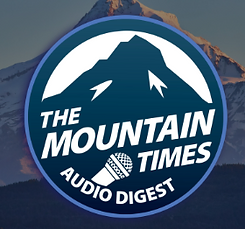By Amber Ford The Mountain Times
As summer creeps into season and people begin to plan out their vacations, the thrill of camping in The Mt. Hood National Forest is an activity many will experience this summer. With 65 open campgrounds to choose from in the vast wilderness of evergreens, rivers and lakes, visitors in these designated locations can experience a camping community based on a shared passion for the great outdoors. With amenities such as toilets, boat access in some lakes and camp hosts, the designated camping areas allow the feeling of “roughing” it, without the complete lack of certain necessities. While these ideal spots may be perfect for many, for those looking for a more rustic and off-grid experience, The Mt. Hood National Forest offers many dispersed camping areas as well.
According to The Mt. Hood National Forest public affairs specialist, Raven Reese, dispersed camping has many benefits, as well as some specific drawbacks for campers. “Many people enjoy dispersed camping as it can provide more solitude while experiencing different parts of the national forest,” Reese said. “Most of Mt. Hood National Forest is open to dispersed camping. However, dispersed camping is not allowed in some areas such as along state and U.S. highways, within developed recreation areas like trailheads and campgrounds, and some specified areas within certain wildernesses,” Reese added.
While many of the designated campsites within The Mt. Hood National Forest are seasonal, dispersed camping can be done year round with proper and safe access. Many of these locations are used outside of peak season, giving campers the opportunity to enjoy seclusion. “Shoulder seasons, including hunting season, are a common time to dispersed-camp, as our developed campgrounds may not be open at that time, even though the weather is still decent,” Reese said. “Campers may camp in a single location on the Forest for up to 14 consecutive days at a time and camp in any location on the Forest for no more than 28 days total during a calendar year. This applies to both dispersed and campground camping,” Reese added.
Although dispersed camping highlights that beautiful vulnerability between nature and a person’s natural need for solitude, there are some drawbacks to this form of a camper’s connection. Unlike many of the designated camping sites throughout The Mt. Hood National Forest, most dispersed camping areas do not have toilet access. Dispersed campsites can also require more time and effort in regards to getting to these locations. “It’s all pack-in, pack-out, so you need to be prepared to rough it more than campground camping and leave no trace of your visit,” Reese said. “Also, it’s a good idea to be prepared on how to answer nature’s call, so to speak, when outdoors. The Leave No Trace center has a good video all about it: https://www.youtube.com/watch?v=v9ykGY_e4W4,” Reese added.
The Mt. Hood National Forest would like to remind campers at any and all sites to remember the importance of pack in and pack out and also the extreme need to familiarize yourself with your surroundings, most importantly, upcoming summer fire restrictions. Click here for more information.



